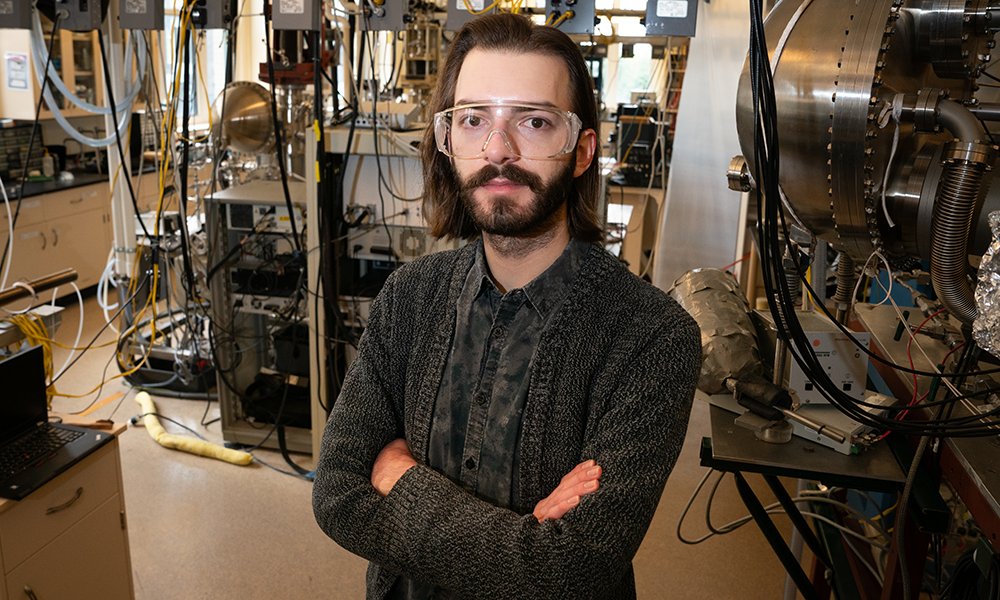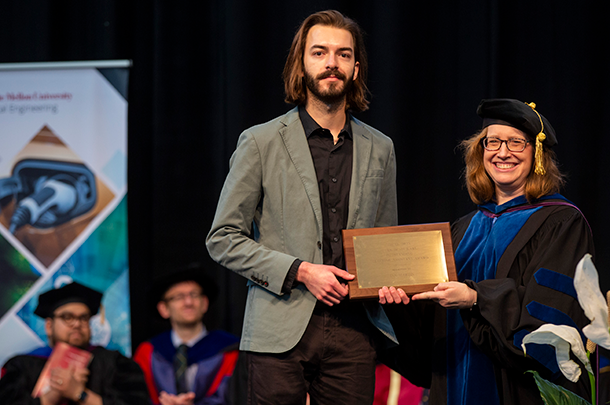Student spotlight: Ian Martin
Lauren Smith
Jun 11, 2024

For Ian Martin, Carnegie Mellon's chemical engineering Ph.D. program isn't a waypoint. It's a destination. "It's for myself, for my learning, and to contribute to the base of scientific knowledge," he says. "The goal is the Ph.D."
Martin's perspective is informed by time in industry. He was a sustaining engineer for EMD Electronics (formerly Versum Materials), a company that produces and sells materials that semiconductor manufacturers like Intel and Samsung use to make chips. He describes his work with distillation columns as textbook chemical engineering. Martin found that an advanced degree would open doors to areas of chemical engineering that interested him more, and after three years, he felt ready to return to the academic lifestyle.
As he applied to Ph.D. programs, Martin says he was looking forward to being in a learning environment again and to being a teaching assistant (TA). He sympathizes with the academic challenges students face and believes it can make a significant difference to have a TA who cares about making sure students are learning.
The Department of Chemical Engineering honored Martin with the Mark Dennis Karl Outstanding Teaching Assistant Award in 2023, during his second year in the Ph.D. program. The award is given annually to a student judged by the faculty and students to have done an outstanding job as a teaching assistant.

The citation for Martin's award read: "Ian has been very attentive to student needs, and goes above and beyond in supporting students as they plan and carry out lab work, review data, and present findings. He has taken his TA duties to the next level by providing insight into opportunities for improving lab courses."
In his own lab work, Martin focuses on chirality. Chiral molecules, like a pair of hands, are mirror images of one another but not superimposable. Left- or right-handed molecules can interact with other molecules or surfaces differently. To take an example from drug development, one form may have a therapeutic effect, while the other may be toxic.
With his advisor, Andrew Gellman, Martin looks at the surfaces on which reactions with chiral molecules happen. "We aim to better understand how the structure of a surface can affect whether the left- or the right-handed form reacts preferentially," he explains. The Gellman Research Group uses copper for the surface. Copper is known to be catalytically active and is relatively inexpensive compared to some precious metals.
Because there are so many different surface structures, even for one specific material, experimentation becomes intractable. It's unclear which structure researchers should start with and too time-intensive to test them all one by one.
Martin's approach allows him to do reactions involving chirality in a high-throughput way. He works with a surface structure spread single crystal, a piece of copper that has been shaped with a dome to it. "That's significant, because when you shape a crystal like copper into a dome, it exposes a continuous range of different surface structures," he says. A chemical reaction on a surface structure spread single crystal will happen on all those different surfaces at the same time.
The Gellman Research Group uses data from their experiments to inform models. Then, they check predictions from the models with more experiments.
Through this experimental and computational back and forth, they are developing more robust models. "The goal is accurate modeling that in the future will hopefully yield promising applications for real-life prompts, like pharmaceuticals," says Martin.
